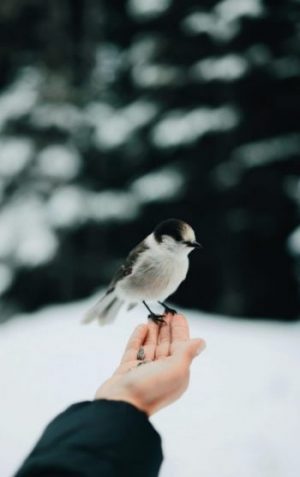This time of year many of us start to feed the birds. But what else should we do to encourage them to flourish in the garden? We know they need help – even sparrows’ numbers are decreasing – and we love to look at them. This post shows you 3 main things to consider.
1. Nesting
Site your nestboxes where they will use them. Now’s the time to put them up, as they start looking for nesting sites in late winter/early spring.
CJ Wildlife says that birds need a clear flight path in and out of the box, but also shelter from wind and rain, and some shade from hot sun. And of course, make them high enough to prevent cats accessing them. You may not have cats but your neighbours’ will quickly find out where the nests are!

‘Organic Gardening’ (RHS series, Stickland and Pears) [out of print but Pears has a similar book here] says different birds prefer different types of box. Robins and spotted flycatchers use an open box with sides and a roof. Bluetits need boxes with a small hole 2.8cm in diameter. Great tits will use ones with holes 3cm in diameter – any wider and the sparrows will take over.
2. Shelter and food
‘Organic Gardening’ also says to provide different layers of vegetation in your garden. A tall tree (if you can) will be a ‘song post’ where they perch and proclaim their territory. Lucky you if you can get a thrush to sing there! Thick shrubs, hedges, undergrowth and climbers will provide natural nesting sites, and their berries will feed hungry birds in autumn and winter. Flowers that attract insects will give birds their food as well, and seedheads. The sight of a group of goldfinches eating cow parsley seeds, and a bluetit holding on to a stem of opium poppy to poke a hole in the seedhead and extract the tiny seeds can have you fascinated.

When you site a bird feeder, it’s best to have some shelter there or nearby so birds can retreat quickly eg if a sparrowhawk’s attention is drawn to the feeder. Cats can lurk underneath, so take care here as well. My cat would crouch under an arching grass and I had to straighten it up during the breeding season!
3. Water

Give them a source of drinking water and water for bathing. They will use ponds and bird baths, and some birds like running water: a bubble fountain will provide this. Put a small ball on the pond surface in winter to keep the water aerated for underwater plants and animals, and to provide access for birds; break the ice on bird baths.
Other gardening autumn tasks for now include planting garlic and other bulbs, enriching the soil with a layer of compost or well-rotted manure, and collecting leaves to make leaf mould with. Put them in a chicken wire enclosure or into black plastic bags with some drainage holes in the bottom.
Leave food like cat or dog food out for hedgehogs, who are preparing to hibernate (move bonfire materials just before you light them to check they’re not in there, too.) And make sure you have that hole in the fence to allow hedgehogs to come and go – see my previous blog post here.
That’s it for now! Sorry if you missed me, I have been busy. Hope to update you on my summer projects soon, there’s been quite a variety.
Jane
